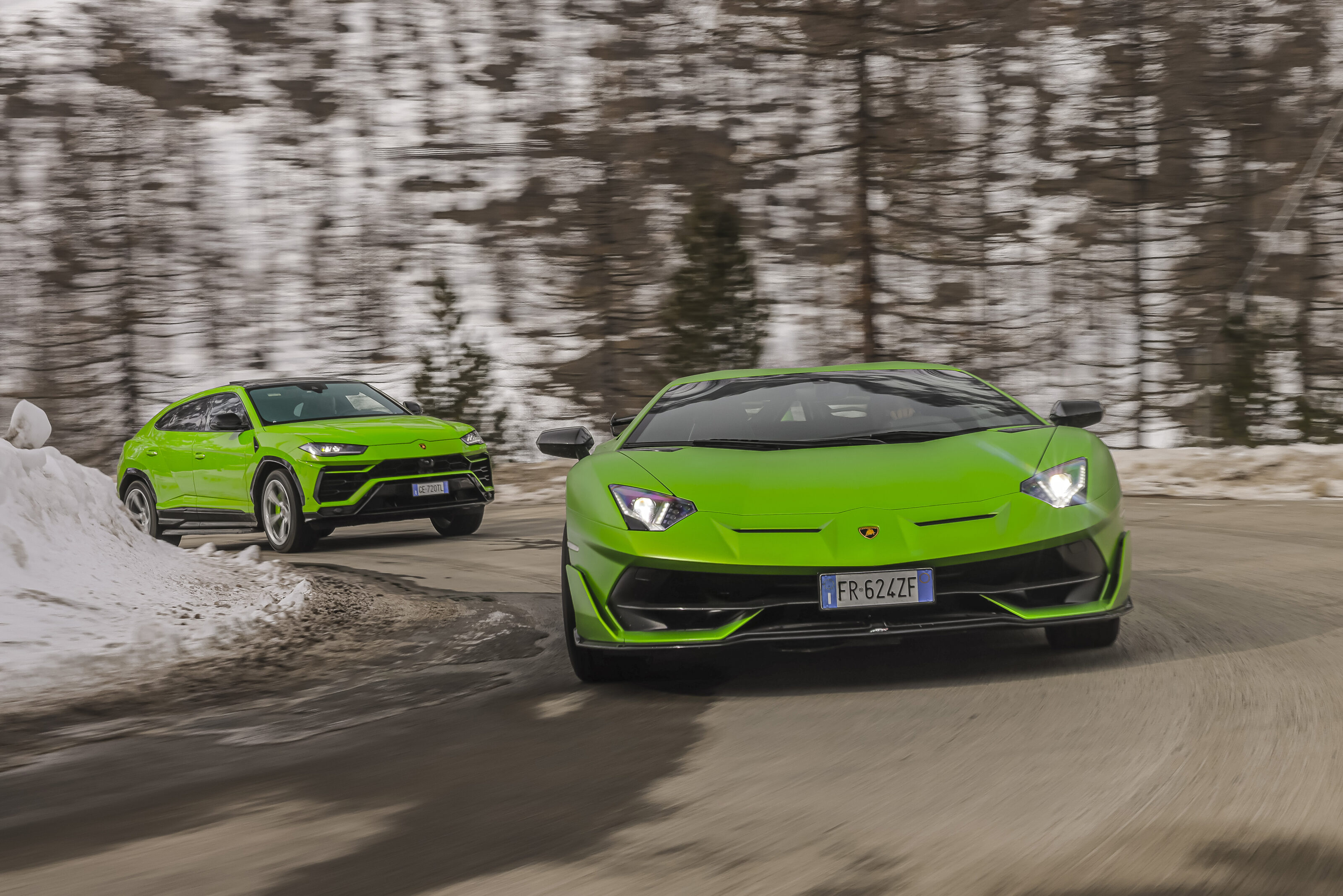“It had the unreal quality of a dream. That strange hyper-cleanliness, the dazzling intensity of colour, the haunting feeling of being suspended in time and motion: sitting there with the speedo reading beyond 160mph and two more gold Lamborghinis drifting along ahead.”
Convoy! I remember opening my copy of Wheels in the late 1970s and devouring every word of Mel Nichols’ vivid account of driving three Lamborghinis on a road trip from Sant’Agata Bolognese through Italy and France and back to London.
Nichols was – still is – a consummate storyteller. He loved to drive fast cars fast, but, more importantly, he took you along for the ride. I could forget for a moment the tedium of my bank clerk job in the Adelaide suburbs; I was right there with Mel as we arrowed across France in an impossibly exotic Italian supercar.
“…for the rest of the day our speed stayed around 120mph, with some spells at 140 and some at a little over 160mph. And so we flowed along that silver-grey ribbon of road, disappearing north into a blue, blue morning. It was a big, wide-open feeling – lulling and warm. You felt relaxed, hand just resting on the wheel, the car reaffirming its poise and arrow-like direction every instant.”
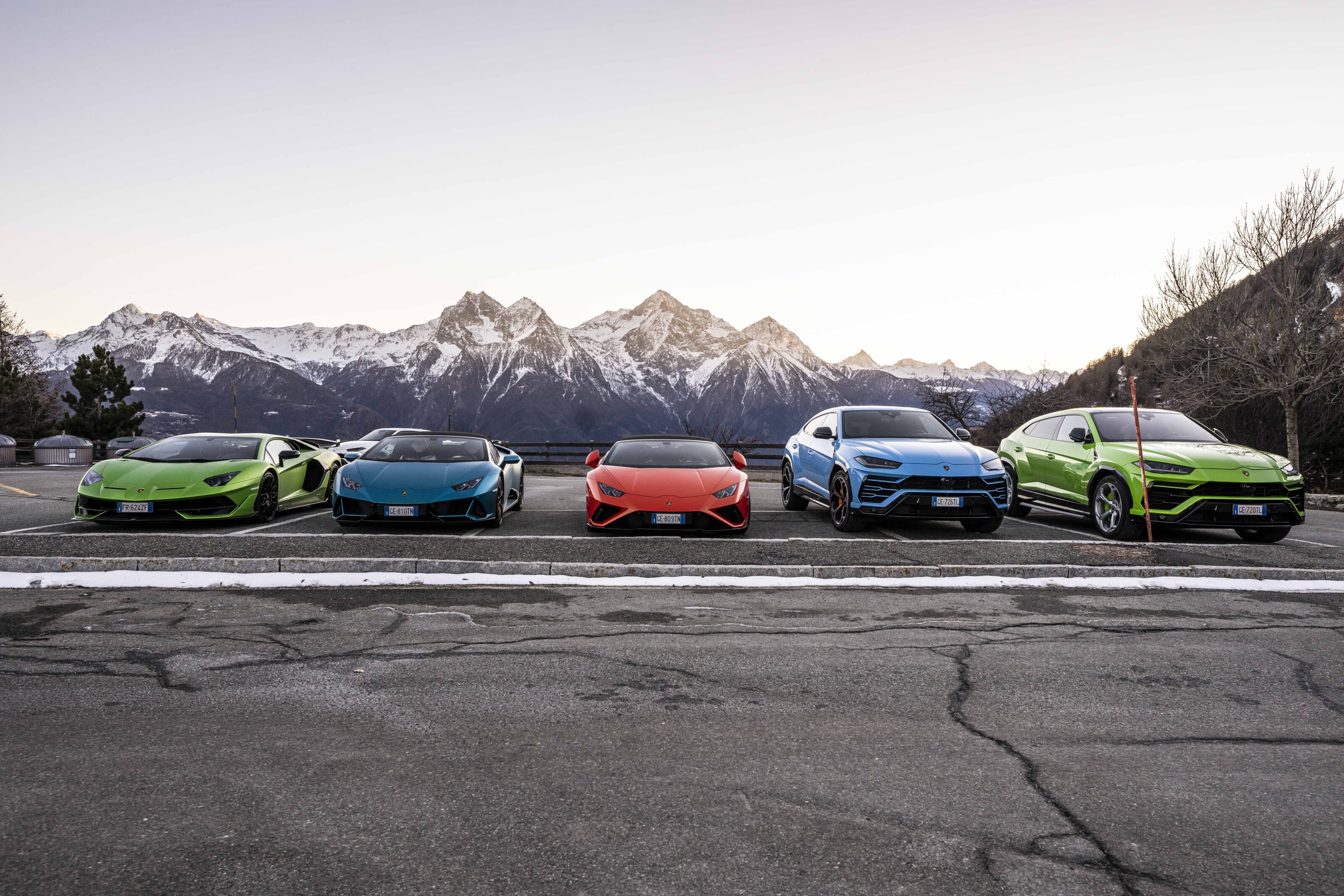
A pale gold twilight glows behind the serrated ranks of the snow-covered peaks to the west as I walk past a brightly coloured assemblage of Urus SUVs and Huracán coupes and convertibles towards the Lamborghini Huracán STO.
I’m almost 1700 metres up in the Italian Alps, and the residual warmth of the day’s bright sunshine is rapidly seeping away. It’ll be close to freezing soon, and my next destination, 60 kilometres away on roads that wriggle and writhe through the mountains like spilled spaghetti, is more than 2000 metres above sea level, snuggled at the base of the Matterhorn.
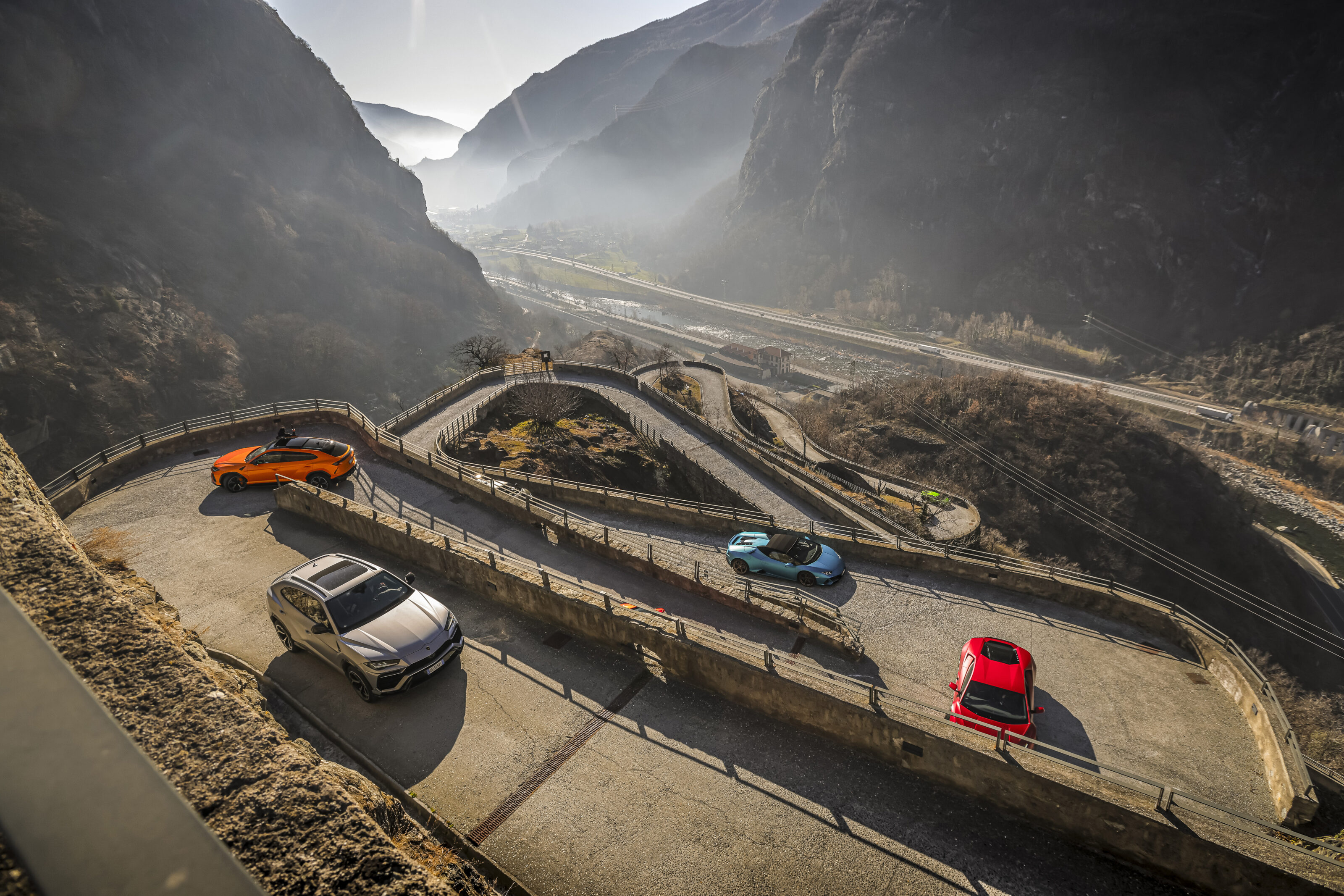
The STO is the edgiest, most track-focused Lamborghini here. I glance at the Pirelli SottoZero winter tyres, 245/30 items at the front and 335/30 at the rear, little more than fat rubber bands wrapped around the Lamborghini’s 20-inch alloy wheels, and silently hope they’re as good as the Pirelli people say they are…
My journey had begun the evening before, behind the wheel of bright blue Urus, rolling out the gate at Sant’Agata Bolognese, where Lamborghinis have been produced ever since Italian industrialist Ferruccio Lamborghini decided he could build a better sportscar than Enzo Ferrari.
Convoy! Take Two wasn’t going to be as epic as Nichols’ original – too much traffic and speed cameras. But it promised to be memorable all the same

After an overnight stop in nearby Bologna, no fewer than 12 Lamborghinis – six Urus, two Huracán STOs, two Huracán Evo Spyders, a Huracán Evo coupe, and an Aventador SVJ – would be heading for the Italian ski resort of Cervinia. Along the way, lunch in a castle.
Convoy! Take Two wasn’t going to be quite as epic as Nichols’ original mad dash across Europe – too much traffic, and too many speed cameras. But it promised to be memorable all the same.
The Lamborghini factory is nothing like it was on my first visit, with Peter Robinson, in the early 1990s. Back then, they were building Diablos in the same hall where the Countach, the Urraco P300 and the Silhouette Nichols and his colleagues convoyed back to the UK were made almost 15 years earlier. And using the same methods, too, clusters of workers wrestling parts out of wooden crates and onto the cars.
Volkswagen Group’s acquisition of Lamborghini in 1998 changed all that.
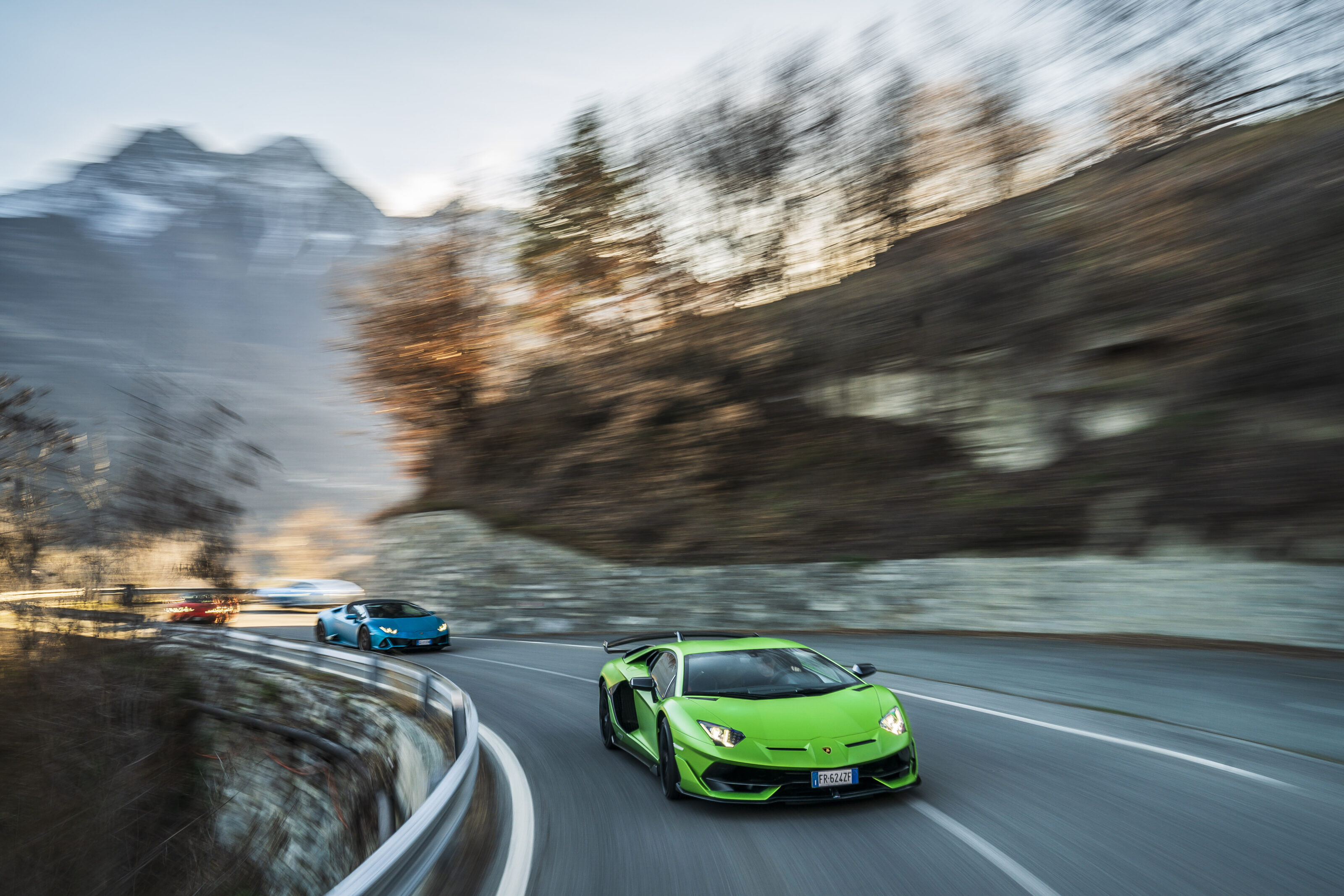
Today there are giant assembly halls, hushed and gleaming and modern, with autonomous vehicles shuttling components to the workers. Out the back, is a paint shop that is one of the newest in Europe. Up front, near the small museum, is a room where buyers can customise their cars, mixing and matching up to 350 different exterior paint colours and 50 different leather trim colours with carbonfibre trim and wheels in black, silver, gold or bronze as part of the Lamborghini Ad Personam program.
Today’s Lamborghinis are the best-built and best-mannered in history. But even as I had headed out of Bologna earlier this morning in the Urus, bound for the lunch stop 360km away, I realised the essential nature of a Lamborghini remained unchanged. The Urus might not have the menace of a Murcielago, but it is still … extreme.
The Urus is Lamborghini’s 21st century gran turismo, composed and confident and fast on all roads in all weather
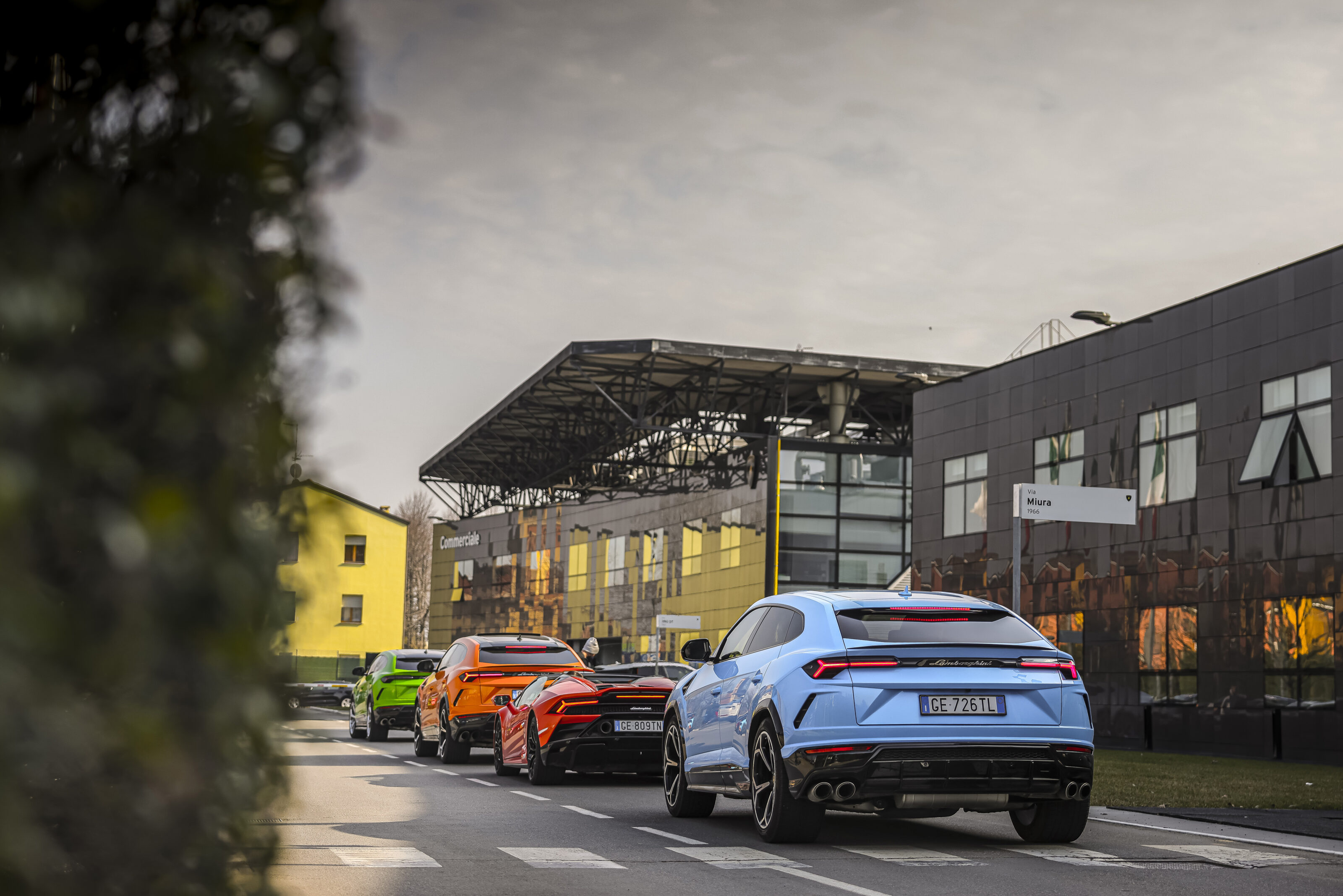
The Urus was the soft option of the group, and one I was perfectly happy to take given that most of the run to lunch at the Forte di Bard in the Aosta Valley would be on autostrada, where its relative quiet and comfort would prove its worth. But it speaks volumes about the Lamborghini brand that its soft option is an SUV that packs 478kW and will sprint from 0-100km/h in 3.2 seconds on the way to its 305km/h top speed.
The Urus was unflustered by the heavy traffic in Bologna and around Milan, and, once past the speed cameras, devoured the lightly trafficked E25 that heads up the Aosta Valley to, ultimately, the Mont Blanc Tunnel and France. It might look like an SUV, but the Urus is Lamborghini’s 21st Century gran turismo, composed and confident and fast on all roads in all weather.

Well, almost all roads. The big Urus barely squeezed between the houses clustered in the shadow of the Forte di Bard and required backing-and-filling to get around some of the tighter hairpin turns on the serpentine one-lane road leading up to the hulking castle that dominates this part of the Aosta Valley.
After lunch, it was out of the Urus and into a Huracán Evo Spyder. Finished in matte blue paint with white leather interior and bronze wheels, this Lambo looked like it would do its best work cruising down to grab a latte in Double Bay on a sunny Sydney Sunday morning. But in Corsa mode on these Italian mountain roads, the 470kW naturally aspirated V10 responded to the throttle with a bombastic bellow that echoed off the rock walls and reverberated around the open cockpit, punching the Evo Spyder hard out of the corners as we twisted and turned, climbing higher, ever higher, among the peaks.
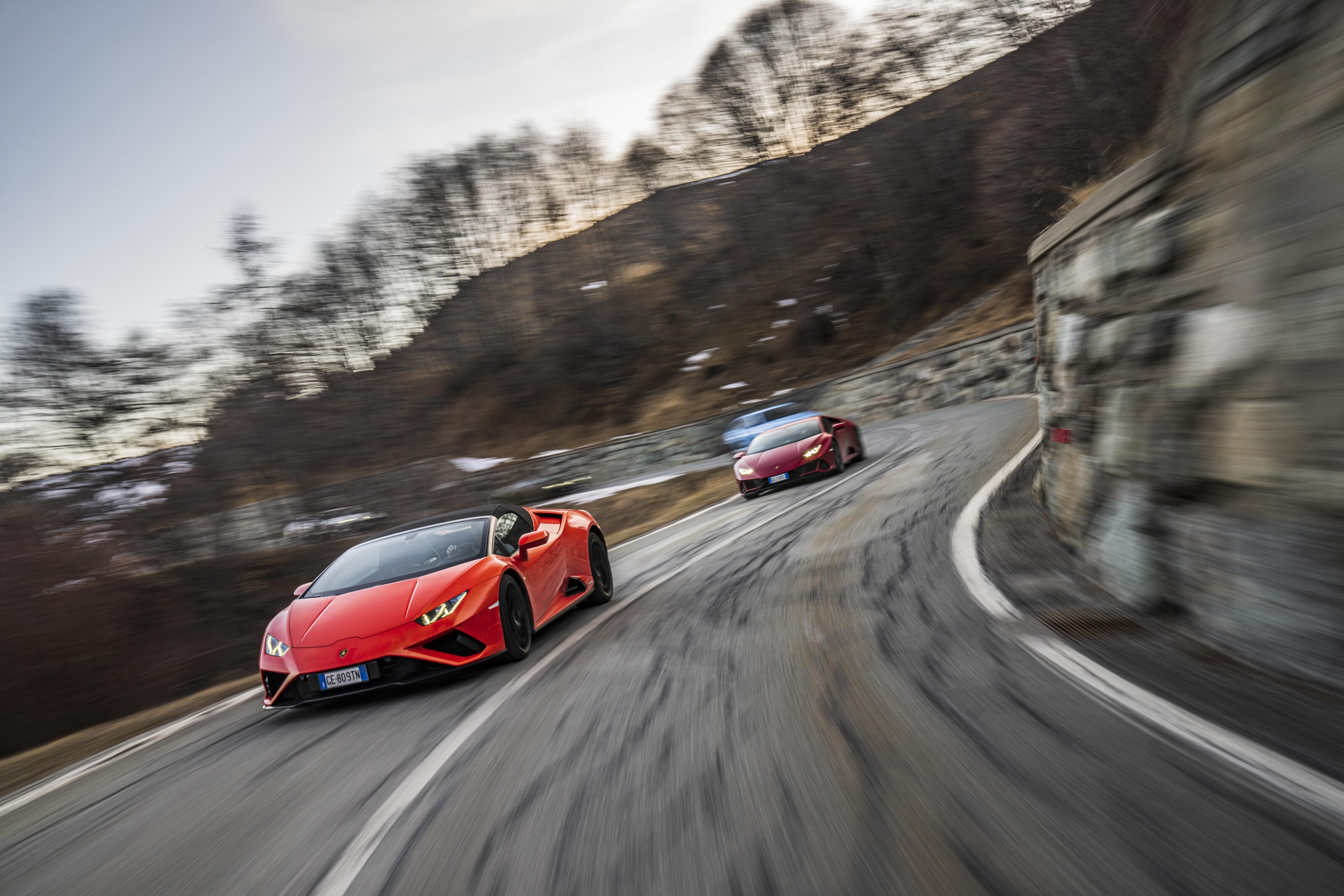
The Huracán has grown up; this Evo Spyder felt a more coherent, more mature car than the early Huracáns I’ve driven. It’s still brash, loud and omigod fast, but the meaty steering offers good feedback, and the ride is surprisingly composed over the patches and frost heaves. The brakes feel indestructible. It’s a more muscular, more deliberate car to drive than a Ferrari, particularly the new 296GTB, which has more delicate layers to its dynamic capabilities.

Now it’s time for the Huracán STO, Lamborghini’s equivalent to a Porsche 911 GT3 RS.
It’ll set you back around $570,000, the STO, and while you’re spending more than you’ll spend on a regular Huracán, that extra money buys you less. Less weight, that is. The rear-wheel drive STO tips the scales at 1339kg, making it 43kg lighter than the Huracán Performante. Weight-saving measures include the adoption of magnesium wheels, carbonfibre reinforced plastic body panels, and a single-piece carbonfibre clamshell bonnet.
The STO doesn’t get the active aerodynamics used on the Performante because it’s a homologation special for Lamborghini’s Super Trofeo race car and active aero is banned
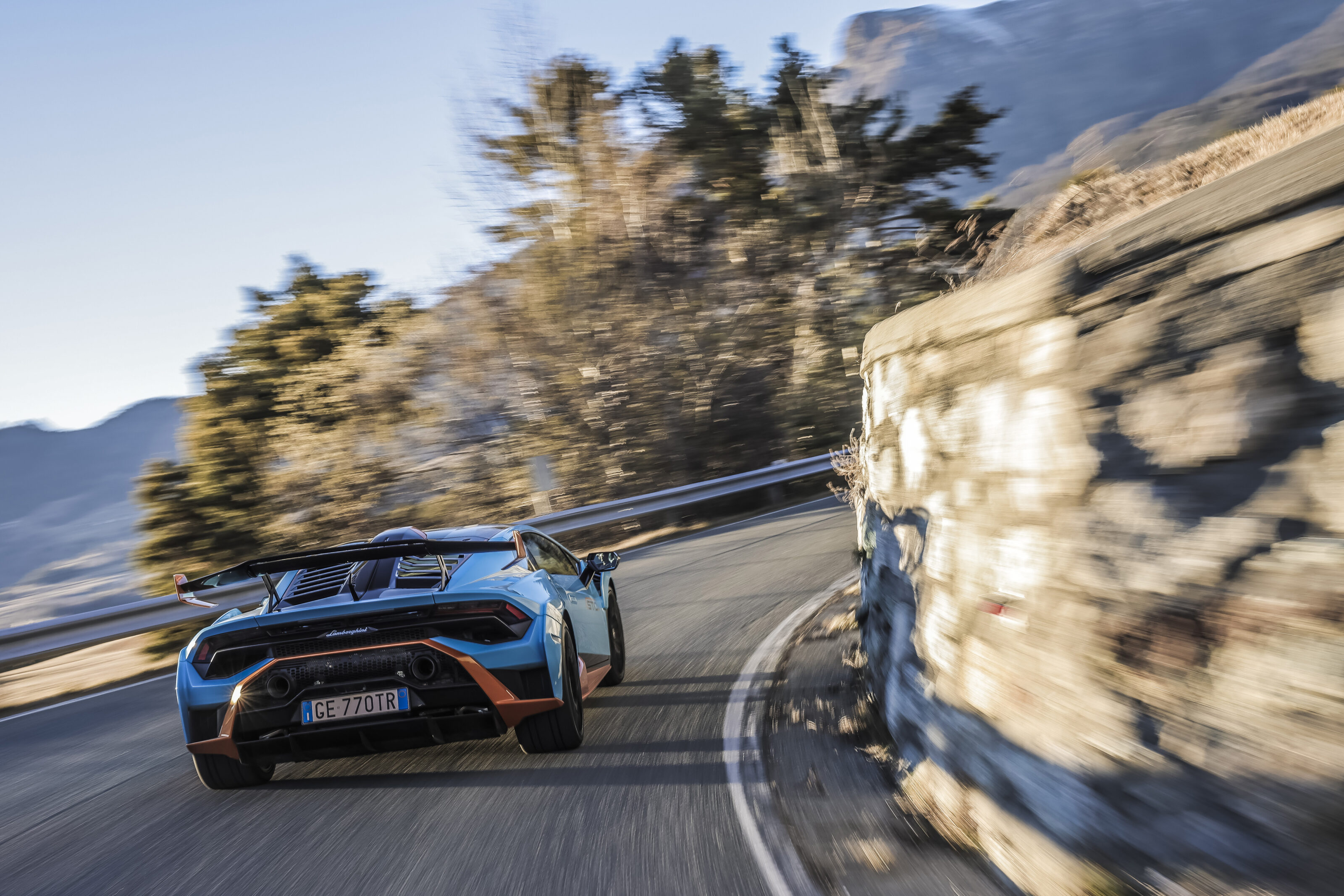
The 5.2-litre V10 makes the same 470kW and 565Nm as in the AWD Performante and Huracán Evo models, and though lighter, the STO is 10km/h slower overall than the slightly less powerful RWD Evo, topping out at 310km/h.
That’s because this Huracán has been optimised for corner response and roadholding rather than straight-line speed. The track has been widened, the suspension bushings are stiffer, and it has STO-specific stabiliser bars and magneto-rheological dampers. Its standard brake set-up is Brembo’s mid-level CCM-R carbon-ceramic brake system, similar to that used on the McLaren Senna. The STO has rear-wheel steering and the mechanical locking diff pre-loads on corner entry to deliver side-to-side torque vectoring. The front wheels are steered by way of a quicker fixed ratio rack.
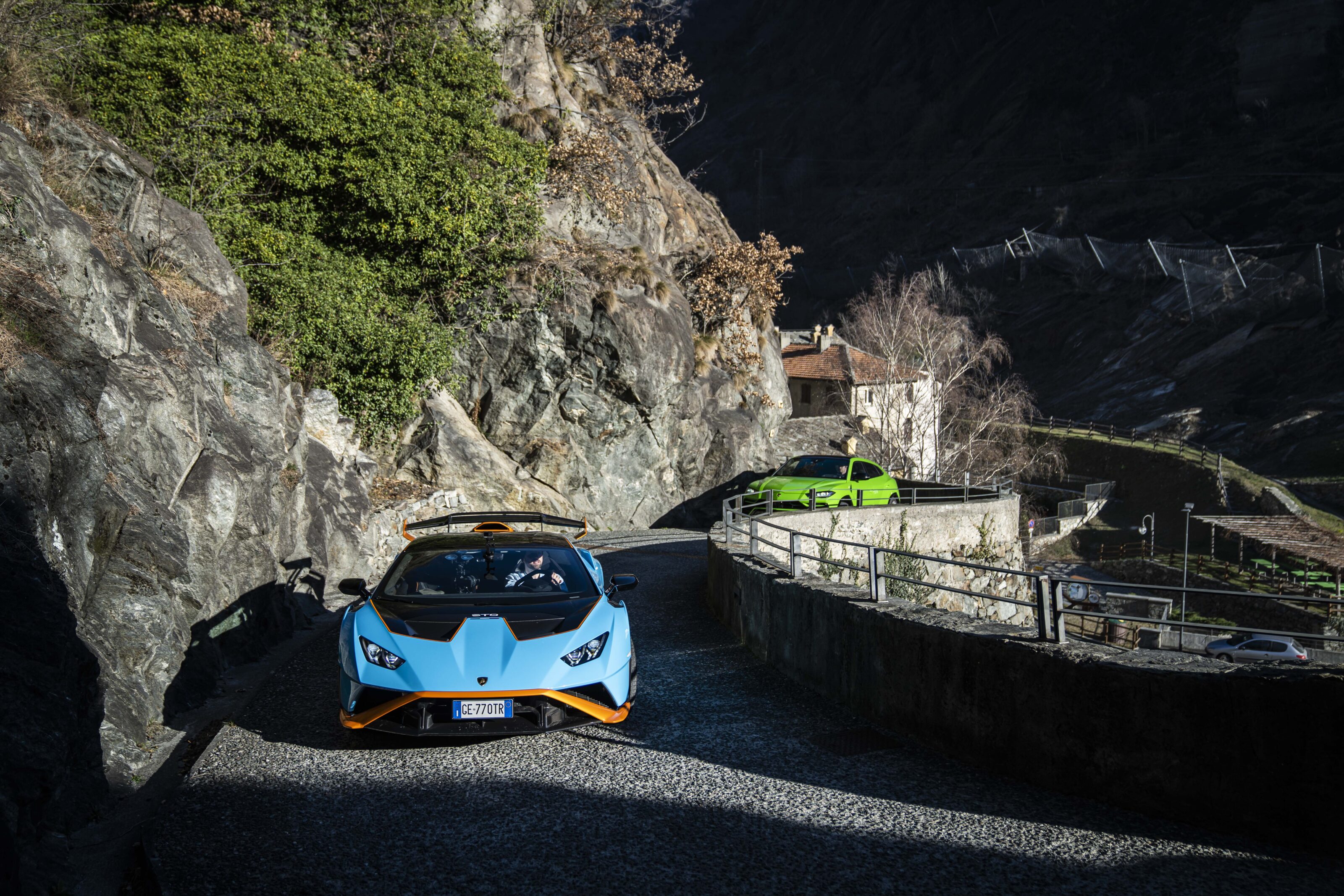
The trick aero package – in addition to that giant rear wing the STO boasts new front bumper air inlets, louvres on the front guards to reduce drag, a new underbody panel, and new rear guards with NACA ducting – helps generate 450kg of downforce at 280km/h. The STO doesn’t get the ALA active aerodynamics system used on the Performante because it’s positioned as a homologation special for Lamborghini’s Super Trofeo race car – STO stands for Super Trofeo Omologato – and active aero is banned in that category.
I’ve driven both the Super Trofeo Evo and GT3 Evo race car versions of the Huracán that inspired the STO, and I can detect their DNA deep in its bones within the first couple of kilometres.
The STO is alive, eager on these occasionally rough mountain roads. But I can feel every nuance through my fingers and toes, as if I’m hard-wired to the chassis

There’s a precision to the front end and a vividness to its transient responses that makes the STO feel like it’s just one step removed from being on the grid for the Bathurst 12-Hour. It moves around under brakes, and under acceleration, too, but the softer tread blocks of the winter-spec Pirellis are only part of the reason why: The STO is alive, eager, relentlessly restless on these occasionally rough mountain roads. But I can feel every nuance through my fingers and toes and bum, as if I’m hard-wired to the chassis.
That mighty V10, bellicose and belligerent, scarcely draws breath on the upshifts and barks and crackles on the downshifts. There are three drive modes: STO, Trofeo, and Pioggia. STO is the default on-road mode, equivalent to the Performante’s Sport setting. Trofeo is dry race mode, and Pioggia is wet race mode. It gets darker and colder as the road climbs, and I’m wary of ice in the occasional wet patches. Discretion, I decide, is the better part of valour, and I switch out of Trofeo back into STO mode.
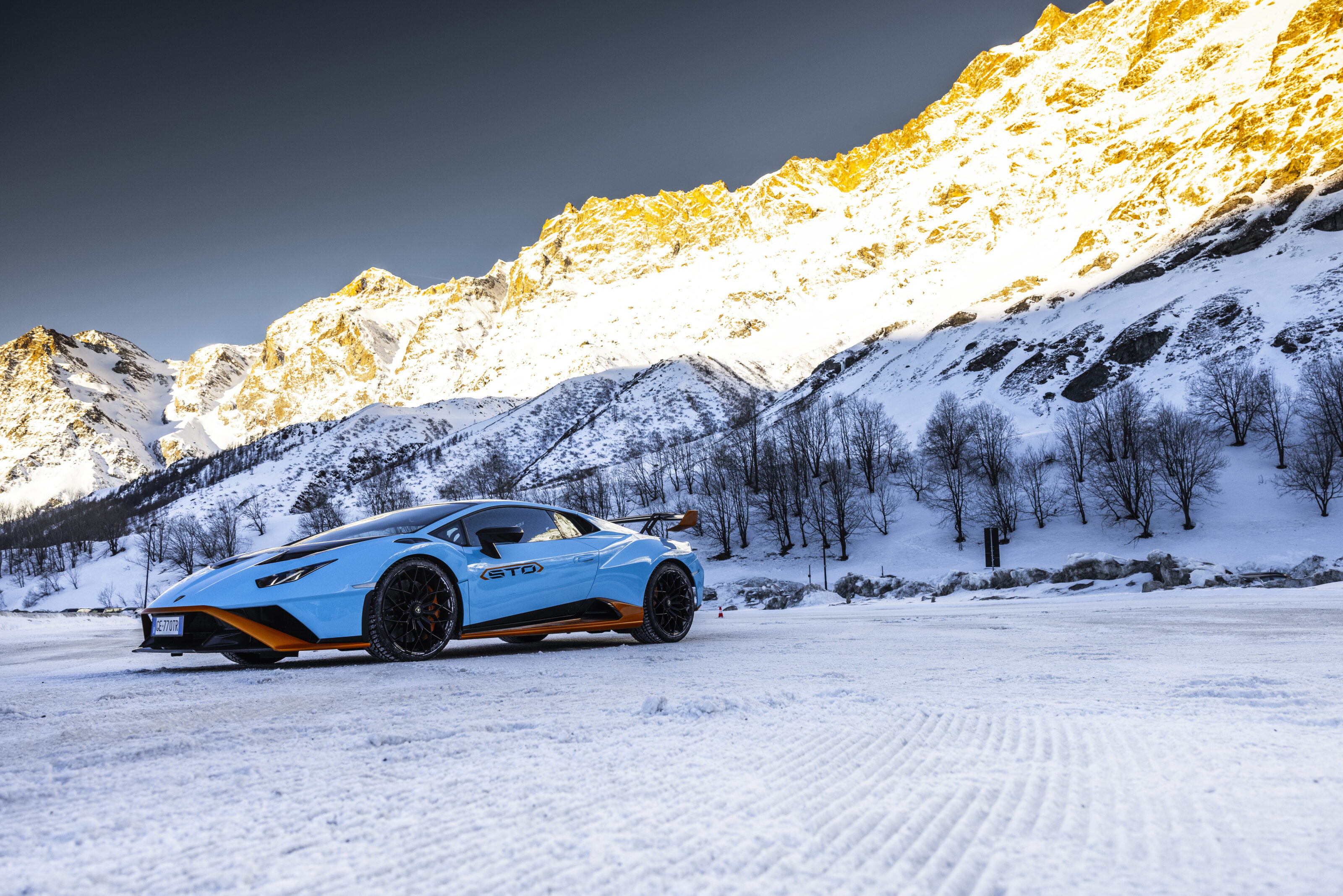
The high beam/low beam switch on the steering wheel has proven next to useless and the headlights really need to be better for a car with this level of performance. But I’m smiling as I pull into the Grand Hotel Cervino; it’s been a raw, intense, intoxicating drive and I can forgive the Huracán STO such silly flaws.
I’m smiling as I pull into the Grand Hotel Cervino; it’s been a raw, intense, intoxicating drive and I can forgive the Huracán STO such silly flaws
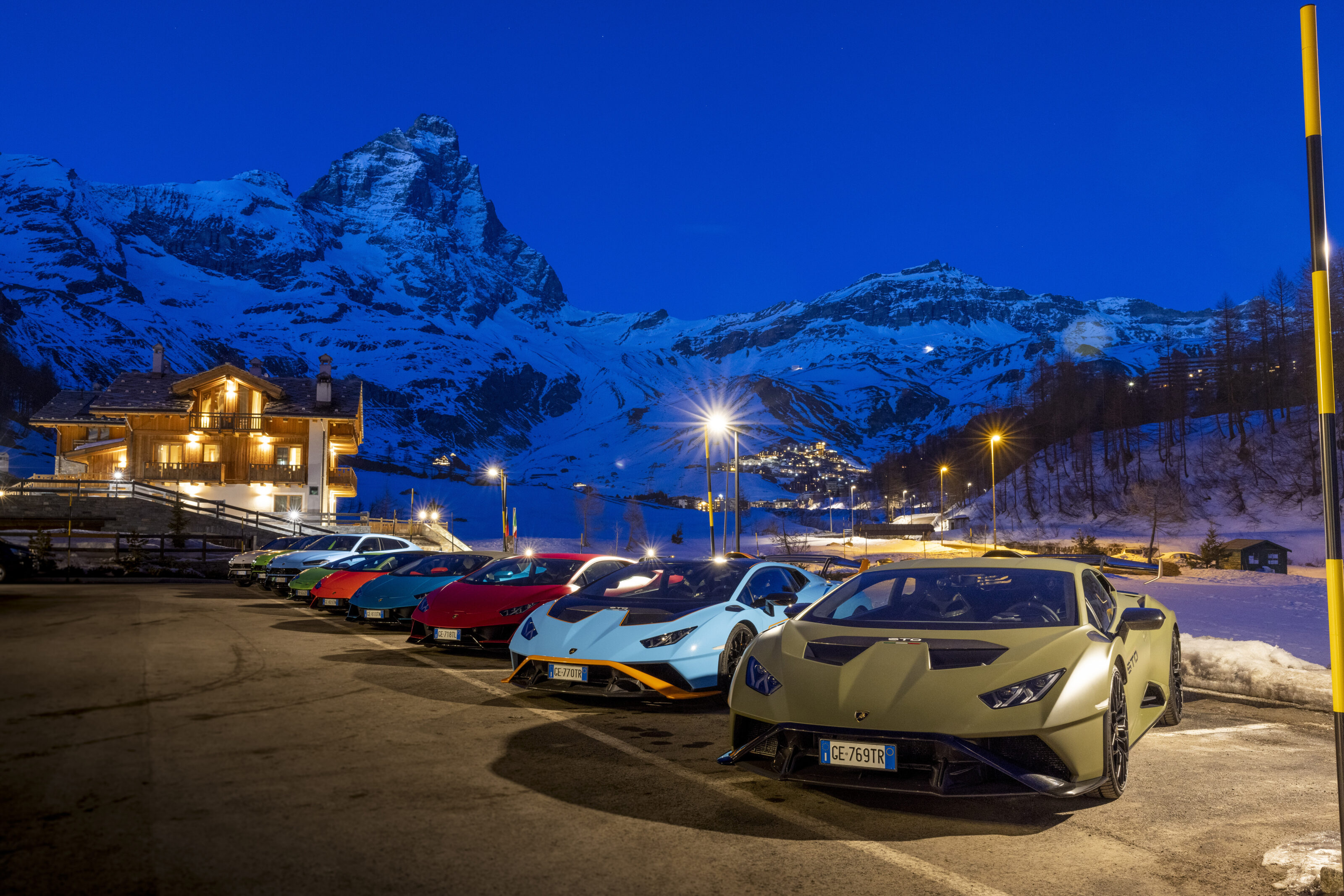
The original plan had been to take part in Lamborghini’s Accademia Neve at Livigno, 400km to the east of here, but the pandemic put paid to that. Instead, tomorrow I’ll get to spend some time skidding an all-wheel drive Evo coupe and the STO around a snowy car park on the outskirts of Cervinia. It will prove entertaining for about two minutes, both Lamborghinis sliding around at little more than walking pace like curling stones on an ice rink.
The Accademia Neve program involves a proper track, speed and studded tyres. It sounds like serious fun. Especially in a Lamborghini Huracán STO.
Next year, maybe…


